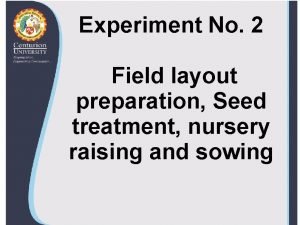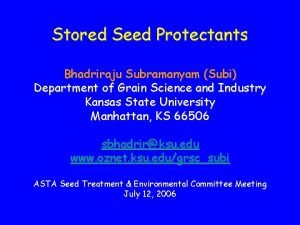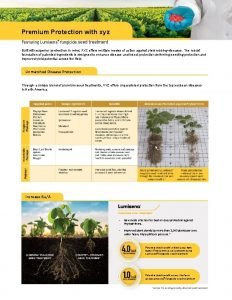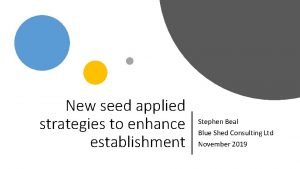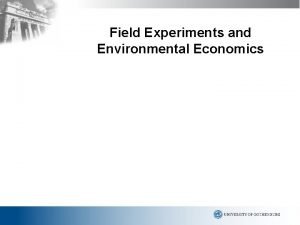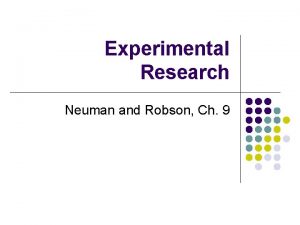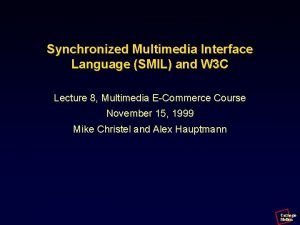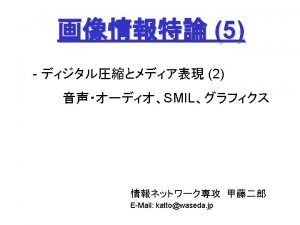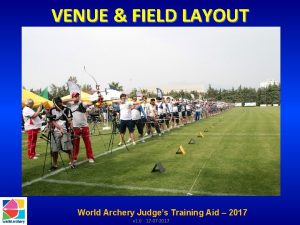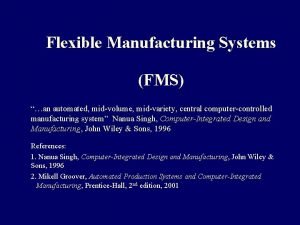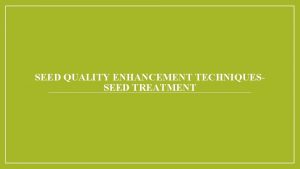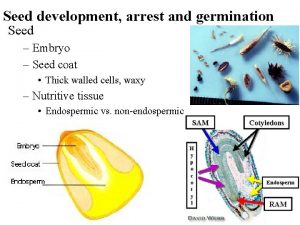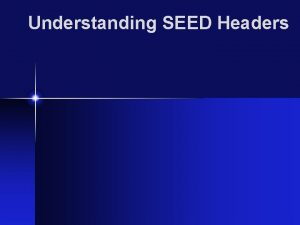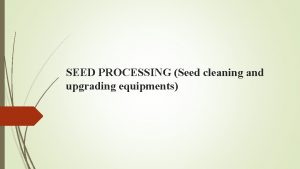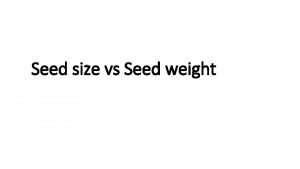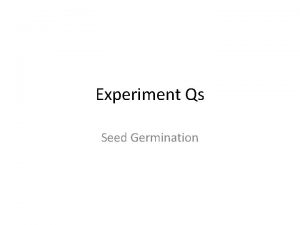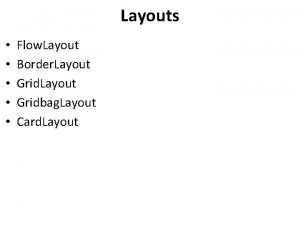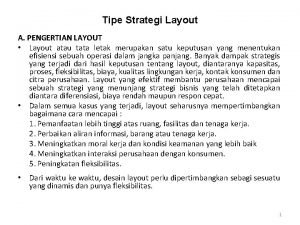Experiment No 2 Field layout preparation Seed treatment















- Slides: 15

Experiment No. 2 Field layout preparation, Seed treatment, nursery raising and sowing

2. 1 Aim • To know about the field layout preparation, seed treatment and sowing

2. 2 Materials Required • Tractor, ladder/plank, Spade, hand hoe, rake, measuring tape, rope, pegs, seed, fertilizers and water etc. • note book, pencil and weight balance.

2. 3 Measurement • The length and width of bed may be decided on the basis of row spacing.

2. 4 Procedure • Soil inside bed should be mellow and friable. Demarcate the area from all four sides keeping corners at 900 angles. • Demarcate the rows at 60 cm keeping first and last row at 30 cm in width of the bed and make shallow furrows with the help of hand hoe. • Form the drainage channel of the plot and Prepare a channel 3050 cm wide on both sides plots to drain out the excess amount of water. • Prepare a bund of 25 cm thickness in the middle of the row taking soil from both sides. • Prepare plots of 25 m 2 size. • Pulverize the soil inside bed with the help of spade or khurpi to a desirable depth. • Transplanting and sowing of seeds in row to row and plant to plant distance and irrigate with 1 -2 days interval during rainless period. Seedlings are ready to transplant within 25 -30 days. • The sufficient area to transplant the seedlings in 1 ha field i. e. area of nursery required for 1 ha is 1/20 ha. Direction of sowing/tranplanting

2. 6 Precautions • (i. ) Seed bed should be free from weeds, pebbles and clods. • (ii. ) Seed bed should be thoroughly levelled.

2. 5 Observations • Variety : • As per Plant to Plant spacing and length between row to row. --------- • Total number of plants in a bed. ------------------ • Keeping the above crop geometry. One hectare planting how much plant requires for plants. -----------------

Formula Area (m 2) × 100 • Plant population = ------------------ RR (cm) × PPspacing (cm)

2. 7 Seed treatment • Seed treatment is a process of application of chemicals or protectants with fungicidal, insecticidal, or bactericidal properties to seeds that prevents the carriage of insects or disease causing pathogens in/on the seeds which protect the seed from any kind of damage. Seed treatment also enables the seed to overcome seedling infection by soil borne pathogens. S. No. Name of Crop Pest/Disease Seed Treatment

2. 8 Sowing of seeds • Sowing is the process of planting. An area or object that has had seeds planted in it will be described as being sowed. • Crop Choice is according to season • The crops are: Irrigated puddle lowland rice / any irrigated dry crop (maize / sorghum / pearl millet / finger millet / cotton / groundnut / sunflower / sesame the student him/ herself is doing the cultivation practices.

Step of cultivation of crop A. Transplanted crop • Selection of nursery area Preparation of nursery Application of manures to nursery seed treatment with fungicide and bio-fertilizers seed soaking and incubation forming nursery beds and sowing seeds weed control and plant protection to nursery preparation of main field application of organic manures basal application of fertilizers and biofertilizers pulling out seedlings and transplanting application of herbicides after cultivation practices top dressing of fertilizers, plant protection measures harvesting, threshing, drying and cleaning the produce working out cost of cultivation and economics

• B. Direct sown crop • Selection of main field Preparation of main field land configuration for sowing application of manures and fertilizers seed treatment with fungicide and biofertilizers sowing and irrigation application of herbicides after cultivation practices top dressing of fertilizers, plant protection measures harvesting, threshing, drying and cleaning the produce working out cost of cultivation and economics

2. 9 Depth of sowing • In sowing, little if any soil is placed over the seeds, as seeds can be generally sown into the soil by maintaining a planting depth of about 2 -3 times the size of the seed.

2. 10 Sowing types and patterns • Flat sowing • Ridge sowing • Wide bed sowing • Hand sowing

Formula Area(m 2) × Test weight (g) × 100 Seed rate (kg/ha) = --------------------------Spacing (m) ×Germination(%) ×Purity (%) × 1000
 Field layout preparation
Field layout preparation Storcide seed treatment
Storcide seed treatment Lumisena seed treatment label
Lumisena seed treatment label Scenic gold seed treatment
Scenic gold seed treatment Field experiment
Field experiment Matthew robson
Matthew robson Denominator layout
Denominator layout Language
Language Smil head layout root-layout
Smil head layout root-layout Fixed layout website example
Fixed layout website example Archery field layout
Archery field layout Open field fms layout
Open field fms layout Gauss law in magnetism
Gauss law in magnetism Field dependent vs field independent
Field dependent vs field independent Field dependent vs field independent
Field dependent vs field independent Electric field and magnetic field difference
Electric field and magnetic field difference
